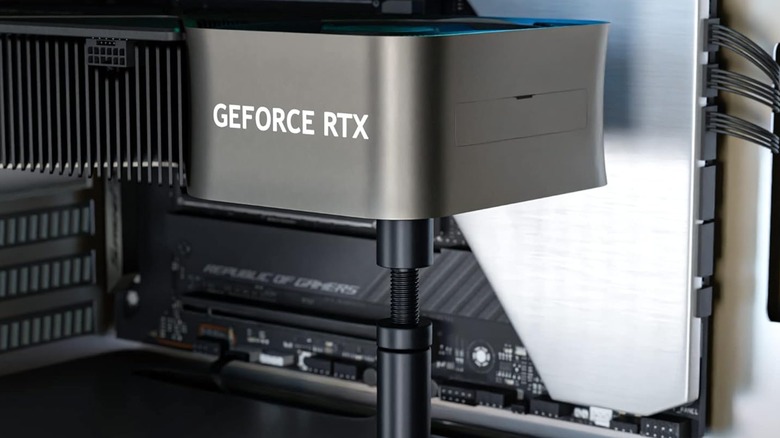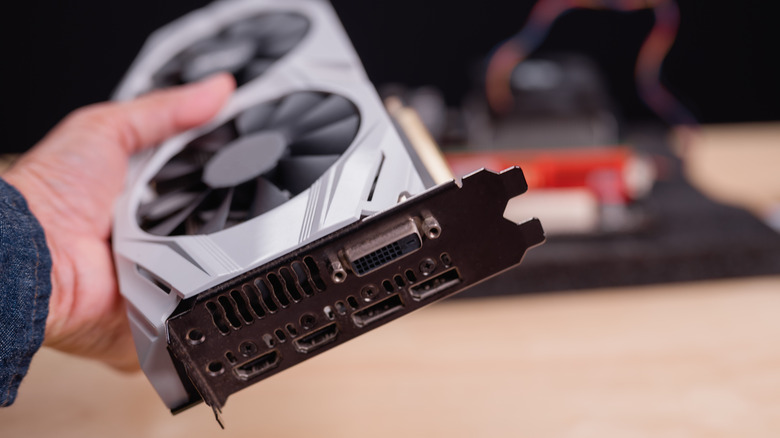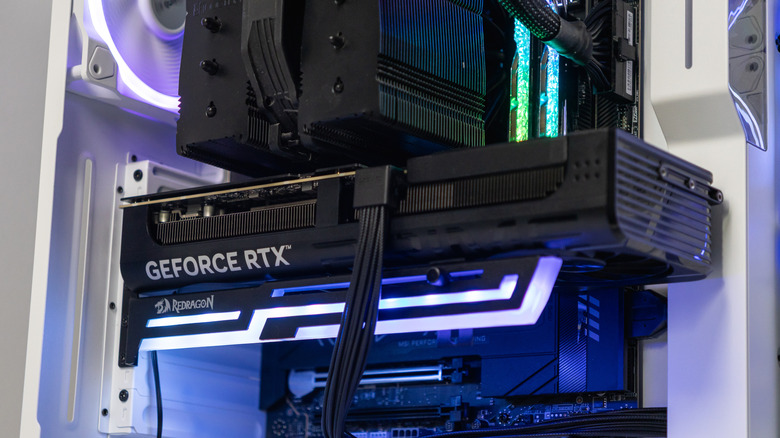What Does GPU Sag Mean? (And How To Avoid It)
We may receive a commission on purchases made from links.
A good PC is kind of like a clock: Its functions are ideal when all the components within are perfectly fitted and synced up. While a PC's components don't need to physically fit together as precisely as the gears of a clock, though, you definitely can't understate the importance of proper connection and spacing. Improper component installation is one of the most common PC building mistakes, because if any larger parts like the GPU aren't fitting properly, it could lead to tangible damage on other vital components.
If the GPU isn't properly fitted within your PC build, or the port it's connected to starts to wear out, the entire GPU unit will gradually start to drop downward, unable to support its own weight. This is a phenomenon commonly known as GPU sag, and while it's not an immediate cause for concern, you should definitely do something about it sooner rather than later if you want your PC to keep functioning properly.
Sagging can damage your GPU and your PC's ports
In a typical gaming PC build, the GPU unit is connected directly to the motherboard via a PCIe slot, as well as mounted on the PCIe slot and bracket. GPUs are some of the largest components you can find in a PC, but generally, this particular mounting setup is enough to keep them steady and level. However, not all GPUs are made equal in terms of weight — some GPUs may be heavier than the norm, especially if they're equipped with additional hardware like built-in liquid cooling.
If your GPU is too heavy for the PCIe slot and its mounts to support under their own power, it'll naturally begin to sag downward. This isn't an immediate, emergency problem, as the GPU is still technically connected to the motherboard and should still function normally. However, when the GPU is sagging like that, it's putting additional pressure on the connection pins of the PCIe slot. It's kind of like sticking a putty knife into the gap between a couple of tiles; if the knife stays perfectly horizontal, nothing happens, but a slight angle creates leverage and begins prying things loose.
Over time, the additional pressure on those connection pins will wear them out, damaging and disabling them. This can be worsened if you're playing one of the more GPU-intensive games on the market today and making your GPU heat up. Your GPU may sag further in high temperatures, worsening the damage on the pins.
If your GPU is sagging, give it some support
The best way to avoid GPU sag is to be mindful of weight limits within your case, as well as your component arrangement. If your GPU is too heavy to install one way, see if you can reinstall it in another direction, placing it flat or shifting its orientation. You won't be able to connect it directly to the PCIe slot if it's mounted vertically, but this can be overcome with a cable to bridge the connection. You should also ensure your GPU is properly fitted for your available PCIe slots, which is a common mistake people make when buying graphics cards.
If your GPU is already sagging, don't despair just yet. There's actually a very straightforward solution here, and it's not dissimilar to fixing a creaky chair: If your GPU is sagging, give it some support. PC component and accessory brands like Corsair sell GPU support brackets, simple metal or plastic scaffolds that are placed right underneath your GPU to keep it safely propped up. There are no advanced, electronic components in these brackets, it's just a simple, solid foundation your GPU can rest on.
Due to their simplicity, brackets and braces aren't particularly expensive. You can get a simple one off of Amazon for around $10. Still, if you'd rather not spend the money, you can also create your own bracket fairly easily in a 3D printer. Some enterprising PC builders have even made their own brackets out of LEGO bricks. So as long as your homemade bracket is properly secured, it should work just fine.


